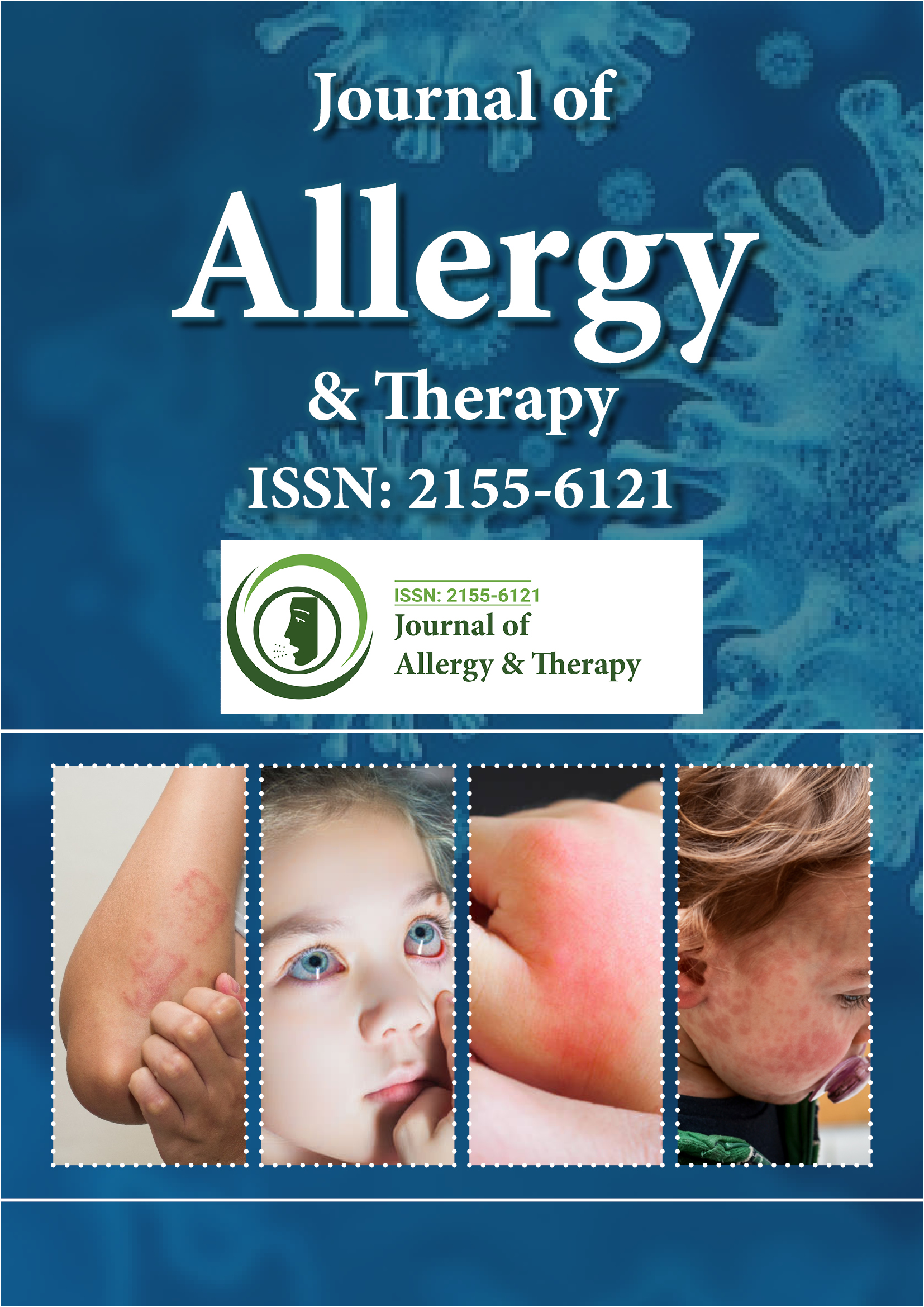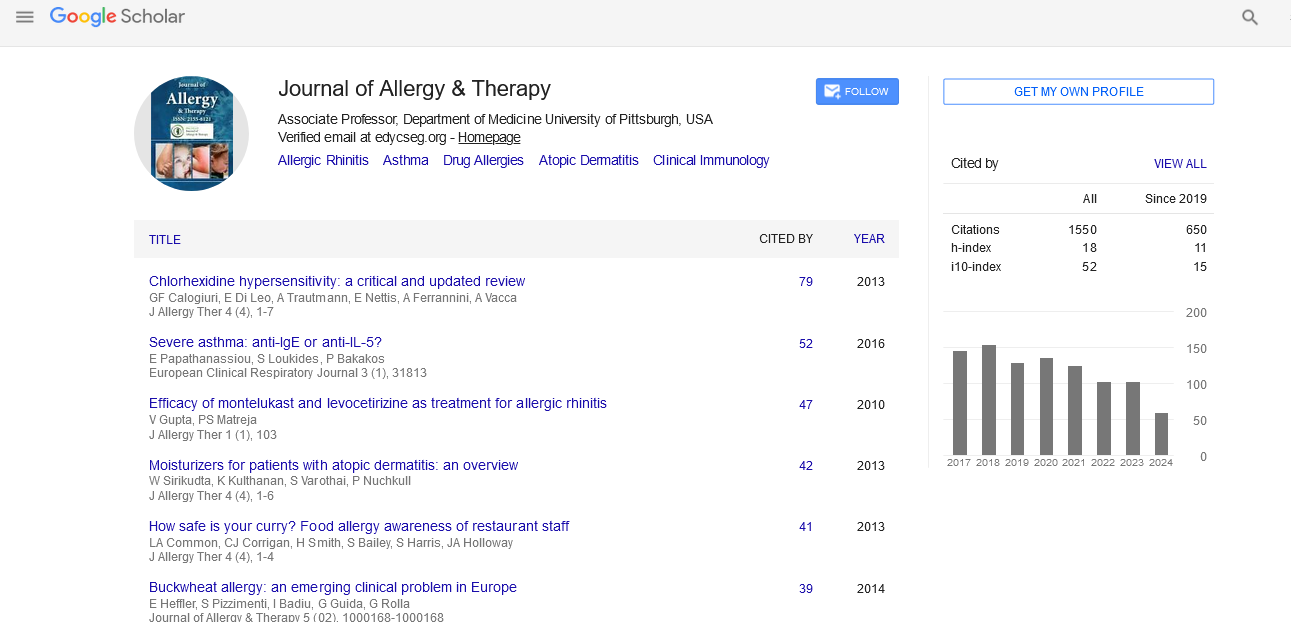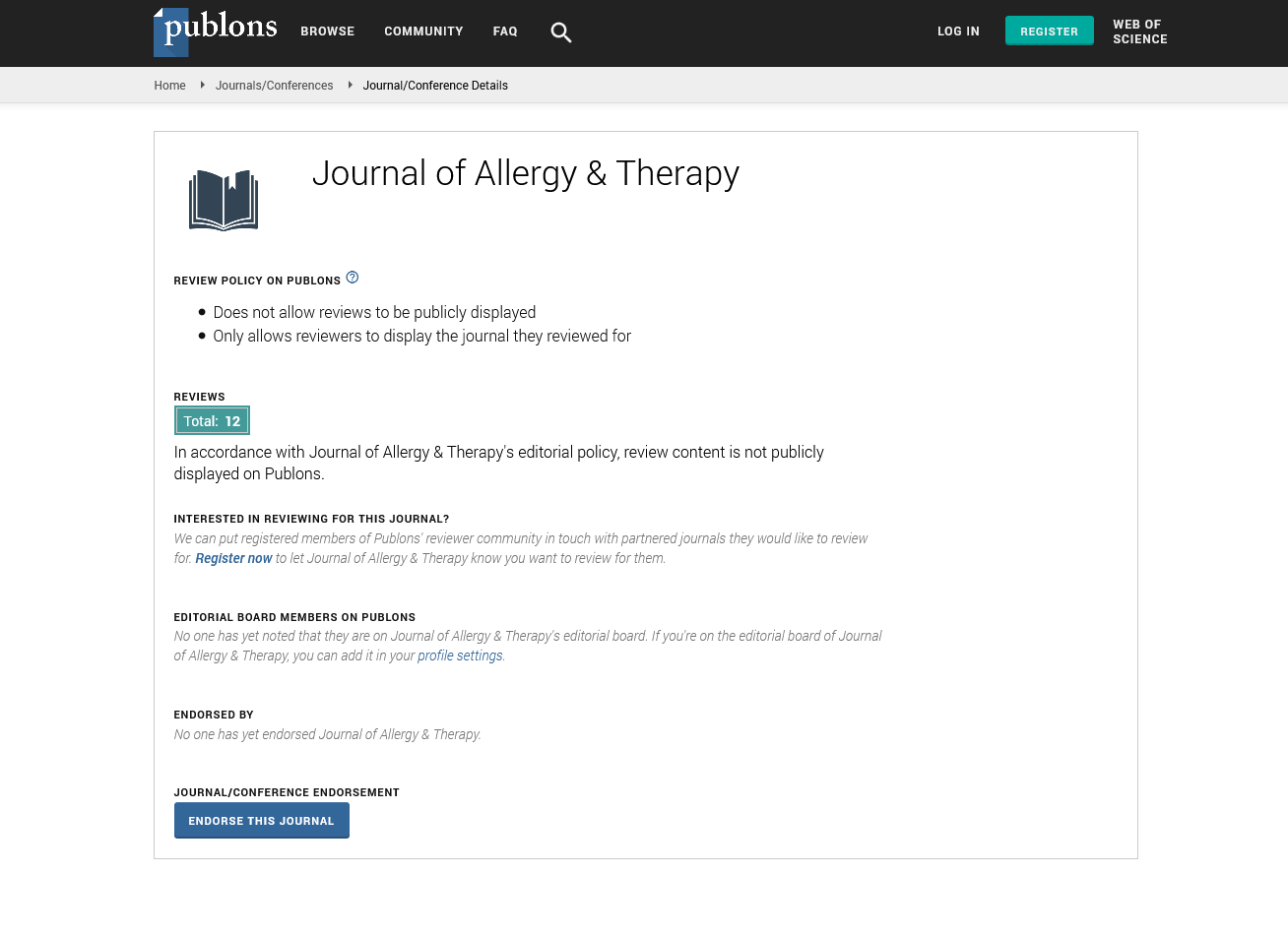PMC/PubMed Indexed Articles
Indexed In
- Academic Journals Database
- Open J Gate
- Genamics JournalSeek
- Academic Keys
- JournalTOCs
- China National Knowledge Infrastructure (CNKI)
- Ulrich's Periodicals Directory
- Electronic Journals Library
- RefSeek
- Hamdard University
- EBSCO A-Z
- OCLC- WorldCat
- SWB online catalog
- Virtual Library of Biology (vifabio)
- Publons
- Geneva Foundation for Medical Education and Research
- Euro Pub
- Google Scholar
Useful Links
Share This Page
Journal Flyer

Open Access Journals
- Agri and Aquaculture
- Biochemistry
- Bioinformatics & Systems Biology
- Business & Management
- Chemistry
- Clinical Sciences
- Engineering
- Food & Nutrition
- General Science
- Genetics & Molecular Biology
- Immunology & Microbiology
- Medical Sciences
- Neuroscience & Psychology
- Nursing & Health Care
- Pharmaceutical Sciences
Commentary - (2023) Volume 14, Issue 6
Mast Cell Disorders and Allergic Dysregulation: Navigating the Intersection of Immune Response
Matthew Edmond*Received: 27-Nov-2023, Manuscript No. JAT-23-24387; Editor assigned: 30-Nov-2023, Pre QC No. JAT-23-24387 (PQ); Reviewed: 14-Dec-2023, QC No. JAT-23-24387; Revised: 21-Dec-2023, Manuscript No. JAT-23-24387 (R); Published: 30-Dec-2023, DOI: 10.35248/2155-6121.23.14.372
Description
Mast cell disorders, characterized by aberrant activation and proliferation of mast cells, have garnered attention due to their intricate connection with allergic reactions. Mast cells, major components of the immune system, play a central role in allergic responses by releasing various mediators, including histamine. This article explores the link between mast cell disorders and allergic dysregulation, reflecting on their impact, clinical manifestations, and implications for individuals prone to allergies.
Mast cells and allergic responses
Mast cells are active in the body's defense against pathogens, particularly in allergic responses. When sensitized individuals encounter allergens, such as pollen, pet dander, or certain foods, mast cells release histamine and other inflammatory substances. This process triggers the classic allergic symptoms, including itching, sneezing, hives, and more severe reactions like anaphylaxis.
Mast cell disorders and allergies
Mast cell disorders, including mastocytosis, can disrupt the balance of immune responses, leading to exaggerated allergic reactions. In individuals with mastocytosis, the abnormal accumulation of mast cells in tissues can result in increased sensitivity to various stimuli, including allergens. This heightened reactivity can contribute to more intense and prolonged allergic symptoms.
Clinical manifestations in allergic mast cell disorders
Cutaneous symptoms: Individuals with mast cell disorders often experience skin-related symptoms, such as urticaria (hives), redness, and intense itching. These symptoms can be triggered by exposure to allergens or other stimuli that activate mast cells.
Respiratory manifestations: Mast cell activation in the respiratory system can lead to allergic rhinitis, asthma exacerbations, and, in severe cases, difficulty breathing. The release of histamine contributes to bronchoconstriction and inflammation in the airways.
Gastrointestinal distress: Mast cells in the gastrointestinal tract can cause symptoms like abdominal pain, diarrhea, and nausea, mimicking allergic reactions to certain foods.
Systemic anaphylaxis: In more severe cases, individuals with allergic mast cell disorders may be at an increased risk of systemic anaphylaxis, a life-threatening reaction that requires immediate medical attention.
Diagnosis and management
Diagnosing allergic mast cell disorders involves a comprehensive approach, considering clinical symptoms, laboratory tests, and, in some cases, skin or bone marrow biopsies. Management strategies often include:
Avoidance of triggers: Identifying and avoiding known allergens or triggers is a crucial aspect of managing allergic mast cell disorders.
Antihistamines: These medications help mitigate the effects of histamine release, providing relief from itching, sneezing, and other allergic symptoms.
Epinephrine: Individuals prone to severe allergic reactions may carry an epinephrine auto-injector to quickly counteract anaphylactic symptoms.
Immunomodulators: In specific cases, immunomodulatory medications may be considered to regulate the immune response and prevent excessive mast cell activation.
Research and advancements
Ongoing research in the field of mast cell disorders is focused on understanding the molecular mechanisms underlying allergic dysregulation. Targeted therapies that modulate mast cell activity and address specific genetic mutations associated with these disorders are being explored. Advancements in precision medicine aim for optimise treatment approaches based on the individual characteristics of each patient's disorder.
Conclusion
The intersection of mast cell disorders and allergies presents a complex landscape where the immune system's delicate balance is disrupted. For individuals with allergic mast cell disorders, managing symptoms requires a nuanced approach that addresses both the underlying disorder and the specific triggers. As research progresses, there prospects for more targeted therapies that can effectively modulate mast cell activity and provide relief for those affected by these intricate immunological conditions. Improved understanding, early diagnosis, and personalized management strategies will continue to enhance the quality of life for individuals navigating the complexities of allergic mast cell disorders.
Citation: Edmond M (2023) Mast Cell Disorders and Allergic Dysregulation: Navigating the Intersection of Immune Response. J Allergy Ther. 14:372.
Copyright: © 2023 Edmond M. This is an open access article distributed under the terms of the Creative Commons Attribution License, which permits unrestricted use, distribution, and reproduction in any medium, provided the original author and source are credited.


